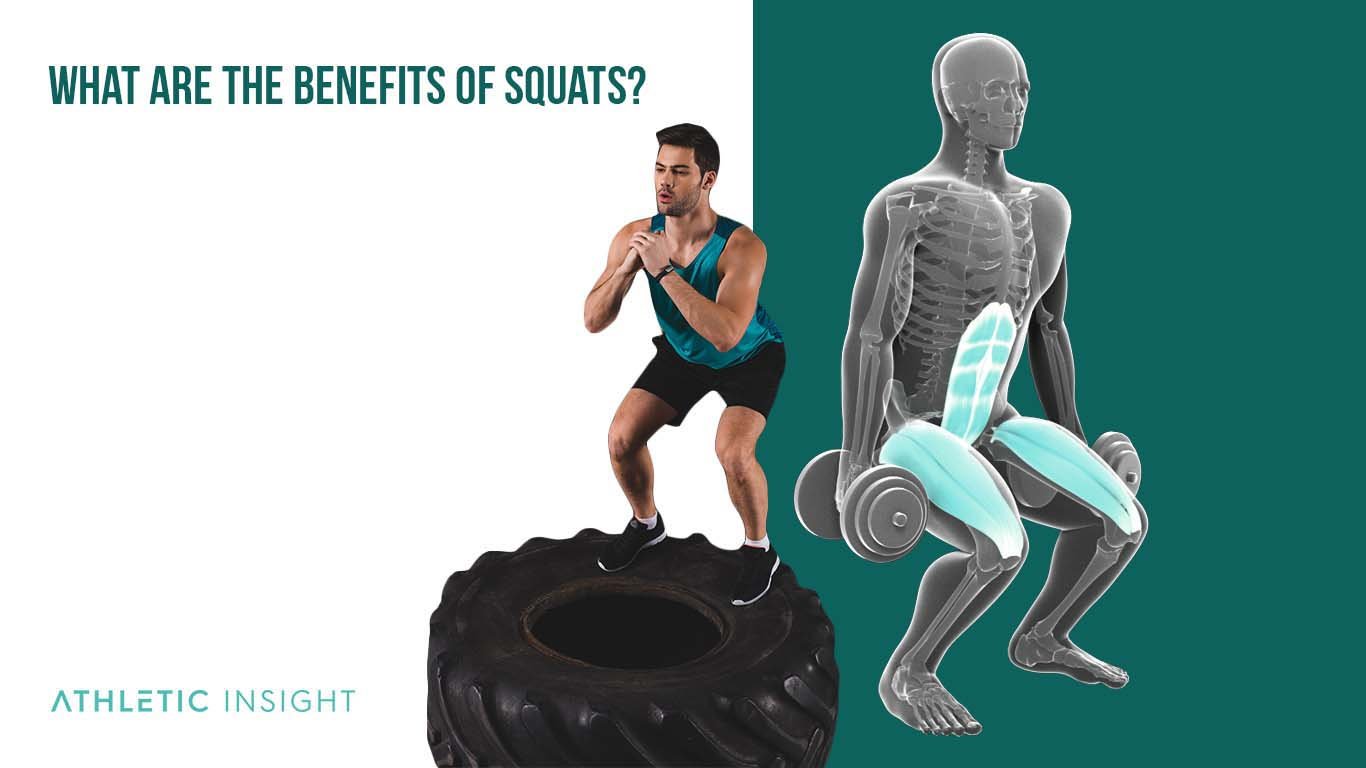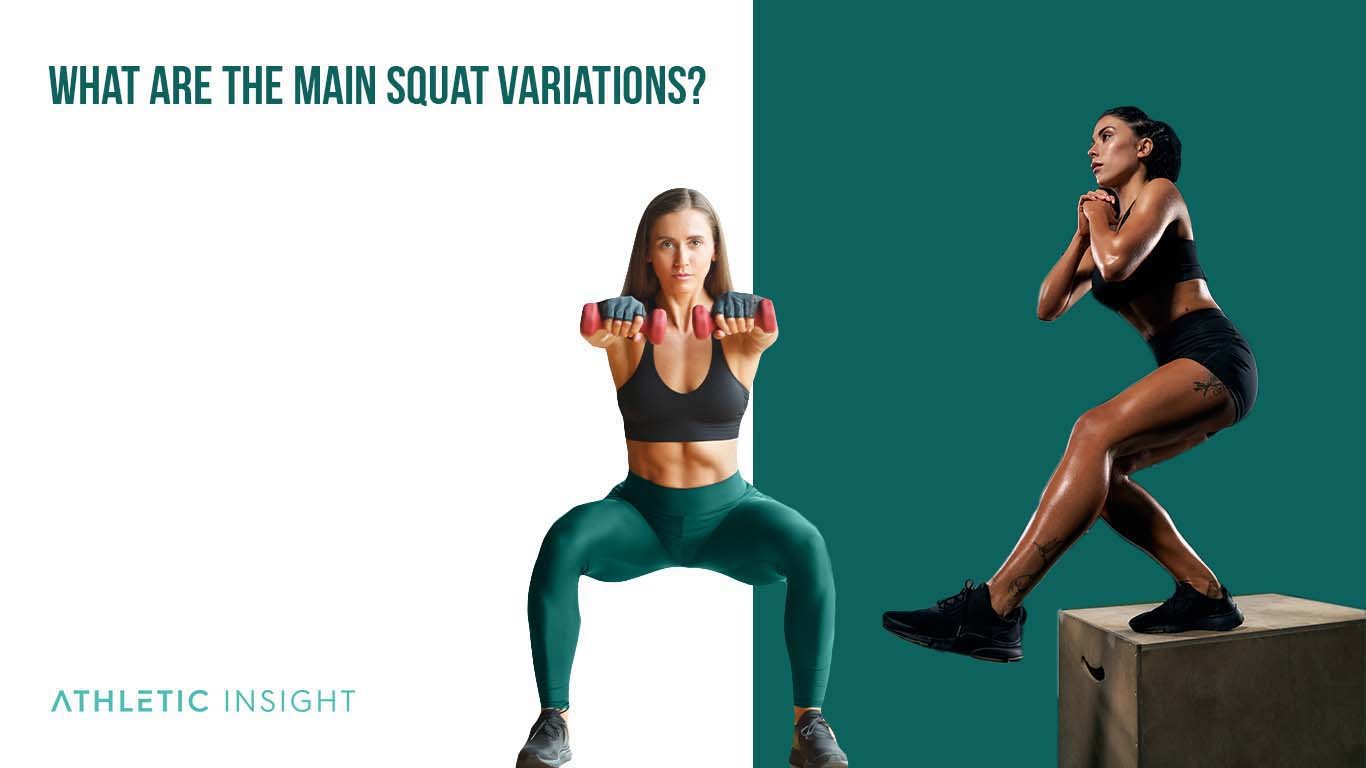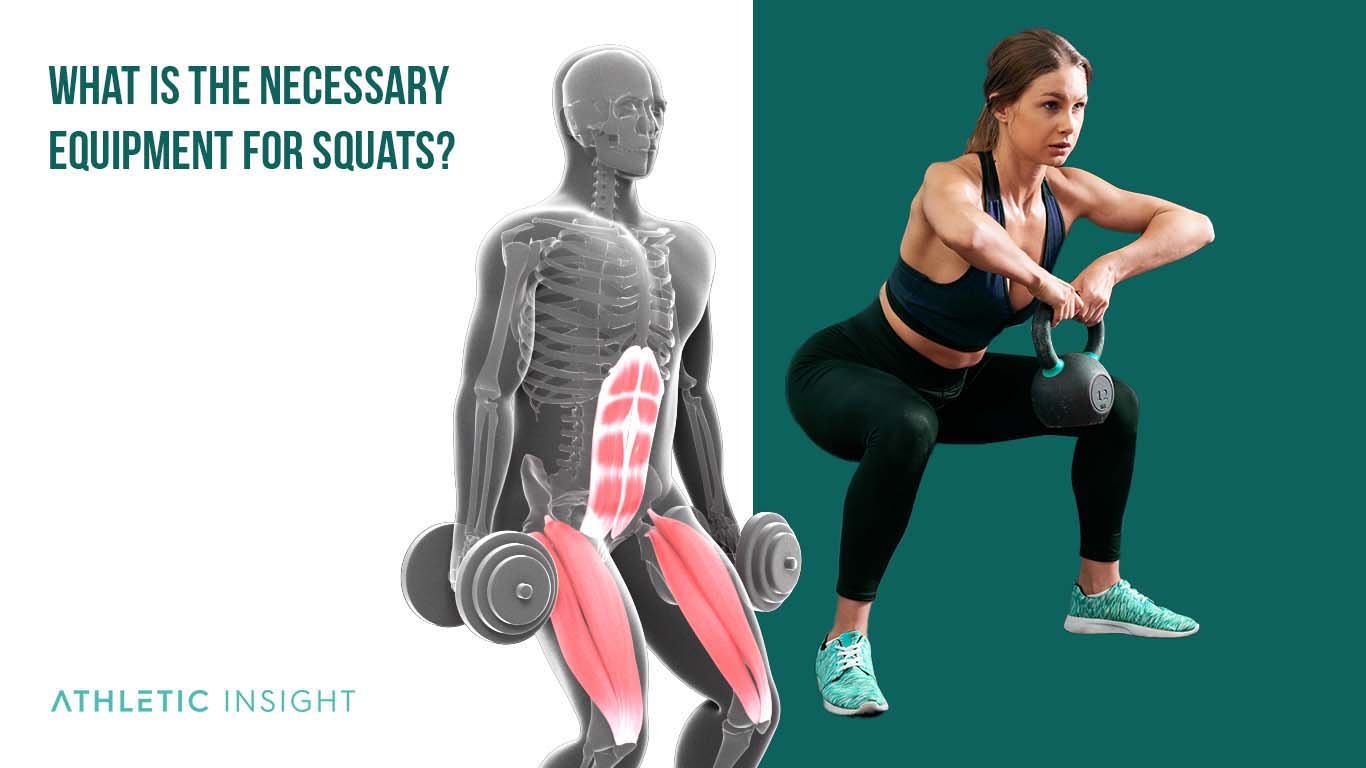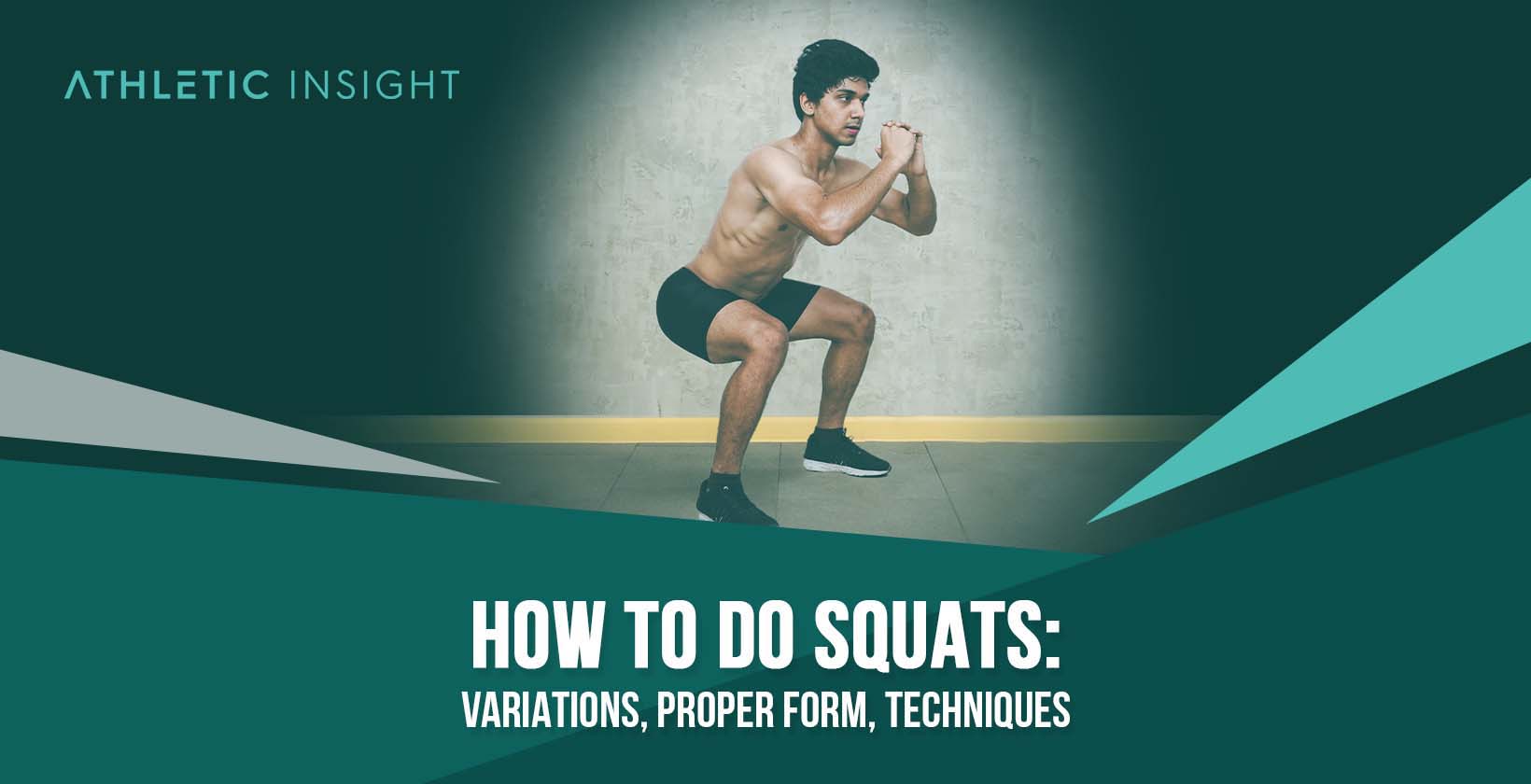Squats are a compound movement that helps you build the muscles in the legs and glutes while strengthening your core, back, and athletic ability. It is simply a crouch from the standing position where the hips go below the knees and then back up to the starting standing position.
As long as it’s done safely, squatting can be a foundational exercise in every routine without ever incurring an injury. Squats work the entire lower body but specifically the quads, hamstrings, and glutes and are a great way to improve athletic ability.
They can be done with different variations that make them more challenging or easier, making them perfect for everyone, from beginners to athletes. The squat is also a functional exercise, meaning it helps you in your everyday life as well as in sports.
This guide will show you how to achieve that with different variations, techniques to try, and proper form to avoid injury.
How to Perform Squats with Proper Form
Squats are an effective workout to include in your leg exercise routine. To dominate squats, you need to master the proper squat form. Remember, squats are not just about how much weight you can move; they’re about performing them safely and effectively.
When squatting, ensure that your knees never go past the tips of your toes (but that doesn’t mean squatting with locked-out legs at all times). Also, keep the leg muscles worked in mind as you move through the movement. Check your form if you don’t feel them tightening or tiring out. Here are the steps to dominating a squat with proper form.
How To Dominate Squats Step by Step
- Start with your feet slightly wider than hip-width apart.
- Keep your chest up.
- Engage your abdominals.
- Shift your weight onto your heels as you sit back.
- Lower your hips until your thighs are parallel to the floor or almost parallel.
- Feel the squat in your thighs and glutes.
- Pause with your knees over, but not beyond your toes.
- Exhale and push back up to the starting position.
Achieving proper form prominence and function are essential aspects of squatting. Whether you are a beginner or an experienced weightlifter, mastering the basic squat will give you the foundation to increase your strength and performance.
Now that we know how to squat correctly let’s move on to some benefits of the exercise!
What are the benefits of squats?
It is essential to understand the benefits of squatting before trying to master them by yourself. The benefits will motivate you to be consistent with them and challenge yourself to achieve a better quality of life. Here are some of the benefits squatting provides for you!

1. Strengthens Your Core
Squats strengthen your core. The squat muscles worked in the core are the transverse and rectus abdominis and external and internal oblique muscles. These are all essential muscles for functional movement and stability. This is one reason squats are a great workout, as they enhance your balance.
2. Reduces the Risk of Injury
Utilizing the squat consistently will reduce the risk of injury by strengthening your muscles and joints. It gives you more stability in your movement. As long as you squat with proper form, squats have a low impact on the knees but a high impact on building strength in all lower body areas.
The squat is also a functional exercise so practicing it every day will help you become more agile and athletic!
3. Crushes Calories
The most significant squat benefit of them all is calorie expenditure. Squats burn calories and increase your metabolism. When squatting, you burn more calories than in other exercises that don’t use the same muscle groups.
The squat also works multiple muscles at once, so it is an efficient workout when short on time!
4. Strengthens the Muscles of Your Lower Body
Another squat benefit is the strengthening of muscles in the lower body. The squat utilizes the muscles in your quadriceps, hamstrings, glutes, calves, adductors, abductors, and even core! This gives you a well-rounded workout that tones and strengthens all these muscles in your lower body at once.
5. Boosts Athletic Ability and Strength
Squats boost athletic ability and strength. When squatting, you activate more muscle fibers in the body. As a result, this gives your athletic performance a boost as it enhances your power and explosiveness.
Squats also increase strength allowing people to lift heavier weights safely, which is a critical squat benefit for females in extreme sports!
6. Variety Helps with Motivation
There are many variations of squats which means you are not limited to the standard squat to benefit from the exercise. So, with such a variation of squats, what do they work out?
Each variation will work the quadriceps, hamstrings, core, glutes, back, and calves while incorporating the adductors and abductor muscles. Switching up the variation enhances motivation as it keeps your workout interesting.
Also, squatting isn’t so complex that you need to be a professional weightlifter or gymnast to do it! At the same time, each squat variation may not be suitable for every individual. There are various ways to squat, making squatting versatile for most individuals.
7. Can be Done Anywhere
The most significant benefit of squats is that they can be done anywhere with no equipment needed. It is a massive benefit for people who want to get fit and don’t have time to go to the gym or purchase any equipment.
All you need is your body weight, and squatting can be done at the home, outside, or at the gym! You get to stay in shape while traveling, working, or just being on the go. It’s a great benefit of squats for men who are athletes and need to stay squatting fit while on the road!
What are the mistakes for squat form?
Now that we’ve established what squats are suitable for, let’s talk about some form-related squad mistakes you should be aware of.
1. Squatting too Low or too High
Squatting too low can put a lot of stress on your knees and back, which might cause pain. If you squat too high, you’ll lose the benefits of doing squats in the first place! Finding the proper squat depth is important, so make sure to experiment with different squat depths to see what’s most comfortable for you.
2. Leaning too Far Forward or Backward
Leaning too far forward when squatting can put a lot of stress on your back. In the same vein, leaning too far backward can also be dangerous as it puts unnecessary strain on your knees. To squat safely, keep your balance centered and squat straight up and down.
3. Putting More Weight on One Leg
Putting more weight on one leg while squatting can cause muscle imbalances and might lead to injury. Make sure that you distribute your weight evenly when squatting to avoid the onset of imbalances and injuries.
4. Lifting too Heavy
When you lift too heavy, you will always sacrifice proper squat form. When squatting, your form should be smooth and controlled. Make sure that you squat with the correct technique to get the most out of the movement.
If you cannot maintain proper form, lower the weight, whether you are using dumbbells, the smith machine, or the barbell. A good squat form is a safe squat form.
Which muscles are involved while performing squats?
The squat is a complex muscle movement that engages multiple muscles throughout the body. These are the benefits that squats have on each muscle involved.
- Core
- Hamstrings
- Quadriceps
- Calves
- Glutes
- Adductor/Abdunctor
- Back Muscles
Core
Core muscles involved in the squat are the transverse and rectus abdominis and the internal and external obliques. The core muscles help by stabilizing your spine throughout the squat movement, which is why it’s important to tighten up these muscles before squatting down! These muscles enhance ease of balance and movement.
Hamstrings
Squats benefit the hamstrings by working the semitendinosus, biceps femoris, and semimembranosus. The squat movement works these muscles through a full range of motion which means they will strengthen as you squat down as well as on your way up!
Quadriceps
Squats benefit the quadriceps by working the vastus medialis, rectus femoris, vastus lateralis, and the intermedius. The squat movement works these muscles throughout the entire movement, strengthening and building your quadriceps.
Calves
Calves receive the benefit of squatting by working the gastrocnemius and soleus. Calves stabilize knee flexion throughout the movement.
Glutes
Squats benefit the glute muscles by working the gluteus Maximus full. The squat movement works this muscle through a range of motion, which will strengthen as it builds. The stronger the glutes are, the more explosive one can perform the exercise.
Adductors and Abductors
Squats work the adductors and abductors by working the adductor magnus, longus, and brevis. These muscles tone the inner and outer thighs.
Back Muscles
Squatting works your back muscles by working out the latissimus dorsi. Squatting strengthens the back and enables one to use more weight when squatting.
What are the main squat variations?
A squat variation is squatting that is different from the traditional squat form. The variations of squad change the benefits of the squats and how your squat muscle gets worked, which means you can use these variations to build and strengthen the muscles in the lower body.

How is it varied? The squat variation changes how you squat by changing the position of your feet, weight distribution, or squat depth.
What are the main features of these variations? The main features of a squat variation are as follows.
- Position of feet: squatting with your feet close together or squatting with your feet far apart
- Weight distribution: weight amount and how they are held
- Squat depth: how deep one squats
Here is a list of squat variations.
- Basic squat
- Wall squat
- Prisoner squat
- Side squat
- Pistol squat
- Single-Leg Squats
- Plié squat
- Plié squat with foot drag
The main squat variations are the basic squat, wall squat, prisoner squat, side squat, and pistol squat. The non-main squat variations are the single-leg, plie, and plie squat with foot drag. They don’t work as many muscles and fully engage the muscles during movement.
For example, the basic squat works all the muscle groups in full. The plie squat focuses on the inner thigh or abductor muscles.
What is the necessary equipment for squats?
Squats are a great option to consider on leg day because there are so many variations that can be performed, just with the equipment alone. The best squat barbells can be used for more efficient exercise.

The following is a list of some of the equipment one can use when performing the squat.
- Bodyweight
- Weighted Vest
- Dumbbells
- Barbell
- Smith Machine
Bodyweight
Bodyweight squats work the same muscles as squatting with equipment. If you are someone that suffers from bad knees, or are just trying to improve muscular endurance, the bodyweight squat is supreme.
Weighted Vest
Weighted vests can add weight and resistance when squatting, which helps you get stronger. Like the bodyweight squat, the weighted vest does not place stress on the knees or any of the other joints taxed while squatting.
Dumbbells
Dumbbells are used when squatting to add weight and resistance. They also provide a lot of flexibility in the movement. While weighted vests and bodyweight squats are excellent options, dumbbells are required if you are looking to gain strength.
Barbells
A barbell can be used when squatting to add more weight and resistance. While dumbbells allow for more flexibility, they are no convenient if you are trying to squat a lot of weight. If you squat more than 300 pounds, good luck finding dumbbells heavy enough.
Smith Machine
The Smith Machine provides stability in holding the barbell while squatting. It’s a safe way to lift heavier weights. The squat rack/Smith Machine option is typically the beginner option for those looking to squat heavier with a barbell as the path is guided and there is little room for accident. There are also built in safety precautions.
What muscles can be affected more by squats?
The muscles that can be affected more by squats are glutes, hamstrings, calves and quads. The muscle group affected the most by the squat is the glutes and quadriceps, as squatting targets the glute muscles. Both muscles are fully engaged throughout the entire movement.
The hamstrings and calves are engaged during the squat movement as well. However, they are not engaged enough to strengthen and build these muscles. They work more as stabilizers.
What are squats-related facts?
Here are 3 Reasons why Squats is the best exercise:
- Squats are the best total body strength moves.
- Squats strengthen the legs, which are critical to mobility and quality of life as we age.
- Squats produce endorphins in the body that can help you naturally manage pain and stress.
Adding the squat to your daily routine can help improve your athletic performance, burn fat, feel happier, and be more mobile.
Do squats increase testosterone?
Yes, squats do increase testosterone levels as it’s a compound movement that works multiple muscles. Testosterone is a hormone that helps with muscle growth and strength, especially in men.
When you do the traditional squat, the testosterone-producing cells in the body are activated and begin to produce more testosterone. This increased production can help with building muscle mass and improving performance.
Do squats affect mood?
Yes, squats can affect your mood by increasing testosterone levels and increasing dopamine, which is responsible for happiness, pleasure, and decreasing cortisol production. Cortisol plays a role in the stress response, and squatting can help manage it.
Is the squat a military movement?
No, the squat is not a military movement. However, the squat can help you improve your athletic ability and mobility, which are beneficial for the military. Additionally, squats help build muscle mass which can also benefit those in the military. This benefit applies to barbell squats and dumbbell and smith machine squats.
Are squats dangerous?
No, squats are not dangerous as long as they’re done with the proper form and technique.
To squat safely, keep your back straight at all times, even during a wall squat or prisoner squat. Don’t round or curve your spine when squatting. It could cause an injury.
Are squats push or pull?
When doing squats, you are doing a push movement.
Are squats a compound exercise?
Yes, squats are a compound exercise because they work multiple muscles throughout the body at once.



